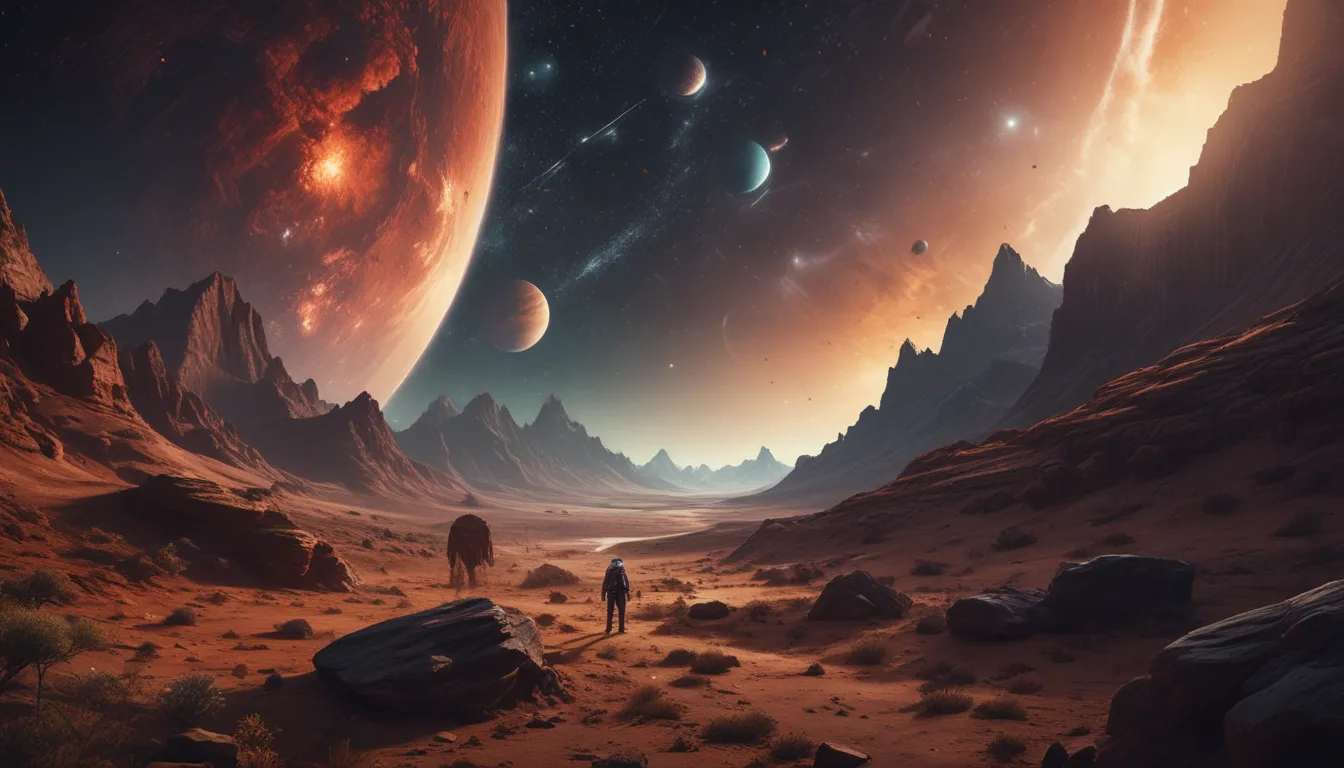The pictures we use in our articles might not show exactly what the words say. We choose these pictures to make you interested in reading more. The pictures work together with the words but don’t take their place. The words still tell you the important facts.
Space, the vast expanse that envelops our planet, is a realm of wonder and mystery. It is a dynamic and ever-changing environment with numerous effects that impact everything within its reach. From the mesmerizing beauty of the Northern Lights to the destructive force of solar flares, the space environment plays a profound role in shaping our lives and the world as we know it.
In this article, we embark on a journey to uncover astonishing facts about the space environment effects. Prepare to be captivated by the sheer magnitude and complexity of the phenomena that occur beyond our Earthly boundaries. Whether you’re a space enthusiast or simply curious about the workings of the universe, these facts will leave you in awe and deepen your appreciation for the vastness and intricacies of the cosmos.
The Protective Shield of the Van Allen Belts
The Van Allen Belts, named after scientist James Van Allen, are regions of intense radiation that encircle the Earth. Acting as a protective shield, these belts trap high-energy particles from the Sun, preventing them from reaching the Earth's surface. This natural phenomenon plays a crucial role in safeguarding our planet and its inhabitants from the harmful effects of space radiation.
Microgravity’s Impact on the Human Body
Extended periods of time spent in space expose astronauts to a state of microgravity. This weightless environment can lead to changes in the human body, such as decreased bone density, weakening muscles, and alterations in the cardiovascular system. Studying these effects is essential for understanding how the human body adapts to different environments, advancing our knowledge of space exploration and long-duration missions.
The Dance of the Northern Lights
The mesmerizing phenomenon known as the Northern Lights, or Aurora Borealis, is a result of space weather. Charged particles from the Sun interact with the Earth's magnetic field, creating dazzling displays of lights in the polar regions. Witnessing the vibrant colors dancing across the night sky serves as a testament to the intricate relationship between Earth and space.
The Impact of Solar Flares on Communication Systems
Solar flares, massive eruptions of energy from the Sun's surface, can disrupt communication systems on Earth. These intense bursts of radiation have the potential to interrupt communication satellites, radio signals, and even pose risks to astronauts in space. Understanding and predicting solar flares is crucial for protecting our infrastructure and ensuring the seamless operation of global communication networks.
The Moon’s Influence on Earth’s Tides
The gravitational force of the Moon significantly influences the Earth's tides. As the Moon orbits the Earth, its gravitational pull creates a tidal bulge, causing the rise and fall of the ocean's waters. This phenomenon not only impacts coastal ecosystems but also has practical implications for maritime activities like navigation and fishing.
The Threat of Space Debris
Human activities in space have led to the accumulation of space debris, posing a significant threat to satellites and spacecraft. Efforts are underway to track and mitigate space debris to ensure the long-term sustainability of space activities and prevent catastrophic collisions.
The Harsh Reality of Extreme Temperatures in Space
Space's harsh environment exposes spacecraft to fluctuating temperatures that can range from extreme cold to intense heat. Engineers and scientists work diligently to design spacecraft that can withstand these conditions, guaranteeing the success of space missions and the collection of valuable scientific data.
Space Weather’s Impact on Power Grids
Solar storms and geomagnetic disturbances can result in space weather events that affect power grids on Earth. Understanding and monitoring these space weather patterns are crucial for mitigating risks to electrical systems and ensuring the reliability of our power supply.
Time Dilation and Astronauts in Space
According to Einstein's theory of relativity, astronauts in space may experience a slight time dilation effect due to weaker gravitational forces. This phenomenon, observed in experiments involving high-precision atomic clocks on spacecraft, showcases the fascinating interplay between space and time.
Psychological Challenges of Long-Duration Space Missions
Space travel, especially during long-duration missions, can present mental and emotional challenges for astronauts. Isolation, confinement, and distance from loved ones can lead to feelings of loneliness, stress, and even depression. Addressing these challenges is crucial for ensuring the well-being and success of astronauts on space missions.
The Transformative Insights of Space Telescopes
Space telescopes, like the Hubble Space Telescope, provide invaluable insights into the universe by offering a clear vantage point free from Earth's atmospheric distortions. These telescopes revolutionize our understanding of cosmic phenomena, from distant galaxies to exoplanets, opening up new frontiers in astrophysics and expanding our knowledge of the cosmos.
Protecting Astronauts from Space Radiation
Exposure to space radiation poses significant health risks for astronauts. Developing effective countermeasures and shielding strategies is essential for protecting astronauts from increased radiation levels, which can impact their overall health and well-being during space missions.
Circadian Rhythm Challenges in Space
Altered day-night cycles in space can disrupt astronauts' circadian rhythms and sleep patterns. Understanding and addressing these effects are crucial for optimizing crew performance and well-being during space missions, particularly on long-duration expeditions.
The Symbol of Global Collaboration: The International Space Station
The International Space Station stands as a symbol of international collaboration in space exploration. Operated by multiple space agencies, including NASA, Roscosmos, ESA, JAXA, and CSA, the ISS embodies a harmonious partnership that transcends national boundaries, fostering advancements in research, technology, and scientific cooperation.
Microorganisms’ Resilience in Space
Microorganisms have demonstrated remarkable resilience in surviving the harsh conditions of space, including high radiation levels, vacuum, and extreme temperatures. Studying their behavior in space provides insights into the potential for life to exist beyond Earth and the adaptability of organisms in hostile environments.
Space Exploration: A Driver of Technological Advancements
Space exploration serves as a catalyst for technological innovation, driving advancements in lightweight materials, communication systems, and remote sensing technologies. These technological breakthroughs not only benefit space missions but also find applications in various industries on Earth, improving our everyday lives.
Conclusion: Embracing the Mysteries of Space
Exploring the space environment unveils a vast array of wonders that challenge our perceptions of the universe. The dynamic nature of space offers opportunities for scientific discoveries, technological advancements, and inspiring feats of exploration. By studying and adapting to the unique conditions of space, we pave the way for further exploration, expanding our knowledge and capabilities as we reach for the stars.
FAQs
- How does the space environment affect astronauts?
-
The space environment can impact astronauts through physiological changes, increased radiation exposure, and potential effects on mental health. Astronauts undergo rigorous training to prepare for the challenges of space travel.
-
What is the impact of cosmic radiation on space technology?
-
Cosmic radiation can damage electronic equipment and sensitive instruments on spacecraft and satellites, necessitating shielding and protective measures to mitigate its effects.
-
How does microgravity affect the human body?
-
Microgravity can lead to muscle and bone loss, cardiovascular changes, fluid redistribution, and weakened immune systems in astronauts. Research aims to understand these effects and develop countermeasures for prolonged exposure to microgravity.
-
How do gravitational forces influence celestial bodies?
-
Gravitational forces shape the behavior of celestial bodies, playing a fundamental role in the formation and evolution of the universe, from planets orbiting stars to galaxies interacting with one another.
-
Can space weather impact Earth?
-
Space weather events, such as solar flares and geomagnetic storms, can have significant effects on Earth's technology and infrastructure, disrupting communication systems, power grids, and satellite operations. Studying and predicting space weather is crucial for mitigating potential damages.
-
How does the space environment impact the search for extraterrestrial life?
- Understanding the space environment helps scientists identify habitable zones and assess the potential for supporting life on other planets. Insights into the conditions necessary for life beyond Earth guide the search for extraterrestrial life.
Embrace the wonders of space and continue exploring the fascinating facts that unveil the mysteries of the cosmos. Engage with the limitless opportunities for discovery and advancement that space offers, and let your curiosity guide you through the uncharted realms of the universe.






